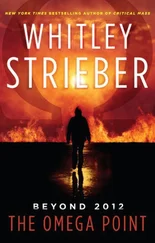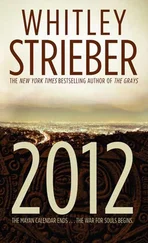4.0 BLUE ZONE:
New Jersey area to Hudson remains under control of 8th Army units. Radioactivity levels non-life-threatening.
New Assignments due 5 May 93.
ORDER END. STOP. RPX.54.30
* * *
DECLASSIFIED
5.25.92
REPORT FOR JT. DEFENSE TASK FORCE
NORAD HQ. ACTING DESK FOR WAR ASSESSMENT
NOVEMBER 6, 1988
PRELIMINARY REPORT ON SOVIET TARGET NEW YORK AREA
1. RADCON SURVEY. Between 12/1/88 and 12/3/88, RADCON procedures were implemented to map the New York City Area in an effort to assess the nature and extent of the USSR attack on this target. RADCON implemented at Level Three employs aerial surveys and radiologic sampling.
As of 12/3/88, Level Four earth-sampling and ground surveys were impossible to implement.
2. SOVIET TARGETS. Aerial mapping reveals three strikes in a NE–SW line, though preconflict data suggest that an additional 3–5 warheads were directed at the same general area. Atmospheric sampling confirms total radiologic levels to be consistent with a 6–7 warhead attack strategy. Data indicate that the additional warheads detonated over water south of Long Island. The three successful land targets were NORTHEAST, Glen Cove; CENTRAL, a point one-half mile west of Elmont; and SOUTHWEST, Oceanside.
3. SOVIET STRATEGY. The nature of the Soviet attack plan is not known at this time, though it is probable that the intended target was the Manhattan Island area. Lack of precise target control may have occurred, or the Soviets may have been unable to complete their full attack. Two other urban targets were struck on 28 October in other parts of the United States.
4. ATTACK STRENGTH. Radiologic surveys suggest that three thermonuclear warheads in the 9–10-megaton range detonated with high simultaneity.
This prevented predetonation from first blast production of extraneous radiation such as neutrons, gamma and X-rays, etc.
5. BLAST PARAMETERS. Two warheads detonated at an altitude designed to maximize ground effects. The airburst explosions occurred between 8,000 and 8,250 feet and produced fireballs approximately 3.5 miles in diameter each. The third warhead was detonated at the surface.
Overall blast effects were constrained by the moderate variance in terrain, although the general flatness of the area encouraged destructive yield. Blast waves as measured in pounds per square inch, or PSI, varied by distance and terrain:
| One Mile: |
200+ PSI |
| Two Miles: |
45+ PSI |
| Three Miles: |
25+ PSI |
| Four Miles: |
16+ PSI |
| Five Miles: |
12+ PSI |
| Ten Miles: |
4+ PSI |
| Fifteen Miles: |
2.2+ PSI |
| Twenty Miles: |
1.5+ PSI |
It may be noted, for example, that reinforced concrete buildings can be destroyed by pressures of 14–16 PSI.
As a result of the high explosive yield, winds are calculated to have been over 2,000 mph at one mile from point of detonation; over 300 mph at five miles; over 125 mph at 10 miles; and over 50 mph at 20 miles. Physical damage from blast waves was amplified by the airborne dispersion of broken objects and particles.
Also, because of the close proximity of detonations—the warheads detonated between 1 and 3 miles of each other—the overall blast effects were intensified.
6. THERMAL EFFECTS. Over 25 percent of the total blast effects were produced as heat. Thermal effects on 28 October were lessened because the attack occurred during daylight with few clouds. Nearly 100 percent of the thermal energy produced was dissipated within 60 seconds.
Such radiation is produced in two waves, or pulses. Theoretically, at the high MT range, individuals have several seconds between the first pulse of thermal energy, which contains approximately 20 percent of the total energy emitted, and the second pulse. At 10 MT, the New York civilian population had 3.2 seconds to take protective action.
It is estimated that each weapon produced the following radiation calculated in calories per centimeter squared (cal/cm 2):
| One-three miles: |
Over 1,000 cal/cm 2 |
| Three miles: |
900 cal/cm 2 |
| Five miles: |
300 cal/cm 2 |
| Ten miles: |
66 cal/cm 2 |
| Twenty miles: |
14 cal/cm 2 |
Thermal radiation at these levels was sufficient to produce first-degree burns on all exposed individuals within 28–30 miles and second-degree burns on exposed individuals within 22–24 miles. It is estimated that as much as 20 percent of the population received thermal burns beyond normal statistical projections due to the number of weapons and their detonation points, which had the effect of broadening the radiation-exposure range.
Limited ground observations by trained personnel have been possible only in some localities. The data, however, confirm the dispersive effects of thermal radiation from three weapons. Numerous incidences of flash burns and “ghost figures” of humans were noted.
7. RADIATION. Initial nuclear radiation was intense and, within a radius of 2 miles, virtually lethal to all life. Almost 100 percent of radiation produced occurred within 15 seconds. The following radiation doses have been calculated for the New York attacks:
| DISTANCE FROM BLAST CENTER |
INITIAL RADIATION DOSE |
| Up to 2.4 miles |
100+ rems |
| Up to 2.1 miles |
500+ rems |
| Up to 2.0 miles |
1000+ rems |
It is estimated that the fatality rate at 500 rems is 70 percent; at 1000 rems it is almost universally 100 percent. Generally, the effects of initial radiation upon the individual depend upon his/her proximity to the blast center and degree of physical exposure. In terms of overall protection for individuals not exposed to the blast(s) directly, it can be noted that a minimum of 18 inches of concrete or similar material is necessary in order to reduce 1000 rems of radiation to a tolerable level of 100.
8. PHYSICAL EFFECTS. A thorough physical survey of the New York area has not been possible as of this date. Aerial photographs, however, reveal considerable damage to the Queens–Long Island areas, and severe-to-moderate damage to all adjacent areas. Given the variability of structures and terrain, the following damage table for the New York area has been constructed for each airburst:
| TYPE OF STRUCTURE |
DAMAGE LEVEL |
DAMAGE RANGE IN MILES FROM BLAST CENTER |
| 1. Wood houses and buildings |
SEVERE |
12 Miles (average) |
| MODERATE |
14 Miles |
| 2. Masonry buildings |
SEVERE |
8.5 Miles |
| MODERATE |
10 Miles |
| 3. Multistory wall-bearing buildings |
SEVERE |
5.9 Miles |
| MODERATE |
7.3 Miles |
| 4. Reinforced concrete buildings |
SEVERE |
5.7 Miles |
| MODERATE |
7.0 Miles |
Relating this schema to blast pressure (as discussed in Section 5 of this Report), the following table can be generated:
| TYPE OF STRUCTURE |
DAMAGE LEVEL |
BLAST PRESSURE (PSI) |
| 1. Wooden buildings |
SEVERE |
3–4 PSI |
| MODERATE |
2–3 PSI |
| 2. Masonry buildings |
SEVERE |
5–6 PSI |
| MODERATE |
3–4 PSI |
| 3. Multistory wall-bearing buildings |
SEVERE |
8–11 PSI |
| MODERATE |
6–7 PSI |
| 4. Reinforced concrete buildings |
SEVERE |
11–15 PSI |
| MODERATE |
8–10 PSI |
Within these parameters, therefore, total destruction of all structures occurred within 3–4 miles of each blast center; severe damage occurred within 10 miles; moderate damage at 14 miles; and minor damage, such as broken windows, at 20 miles. Groundburst damage was more concentrated.
Читать дальше












